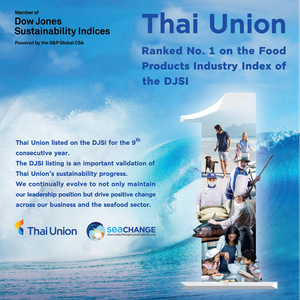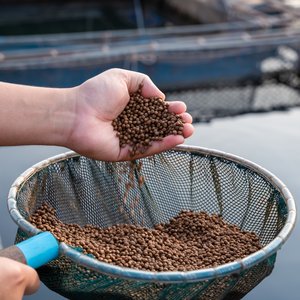As we near the end of 2022, all sights are set on the new year and what would be the main drivers and challenges to influence 2023 feed production. Geopolitical conflict, soaring costs and extreme weather events have squeezed profit margins. As one of the key parts of the aquafeed mill, many of the solutions on how to weather the current situation relies on technology suppliers and in this article, we talk with some of them to get their thoughts on what 2023 will bring.
Coping with the soaring inflation
The rising inflation in 2022 is expected to still have an impact in 2023. “There is a strong demand for aquafeed installations, driven primarily by population growth. Yet, these projects are subject to the impact of inflation, causing delays and postponements. As a result, we put considerable effort into strengthening our supply chain to secure critical components and assure continuing service for our customers,” said Gunnar Hallmann, industry director Aqua & Pet at Andritz.
“Inflation means lower purchasing power on the customer end. Customers will decrease or even stop their purchase of unessential necessities. But, customers will keep purchasing or try to find substitutes with lower price options,” said Albert Wang, sales manager at Idah.
But does this context of high prices already affect the demand for technology products and services from the feed industry?
“Over the last period, we didn’t see a big change in our order intake. We do see that the animal feed industry is less active than the aquafeed, petfood and food industry,” said Koen van Kessel, sales manager at Geelen Counterflow.
Wang said that “with the opening borders of many countries, we have started to visit customers, providing in-house seminars and technical presentations about how to achieve higher efficiency in their production line. Our engineers are helping customers check machine conditions, change the spare parts, and replace old machines. These capital investments are important to ensure the machine runs at the optimum condition to achieve efficient production.”
In 2022, aquafeed companies have been looking for more sustainable solutions. “There is a strong focus in the industry on energy conservation, sustainability, and process optimization. As these elements are all tied together, we see customers looking for suppliers that can offer complete solutions. Additionally, business owners are looking for companies that can not only provide equipment and services but also can contribute to the optimization of the entire process,” Hallmann mentioned.
Is there still room for energy-saving measures in feed mills?
Geopolitical tension in Europe is creating an energy crisis and EU feed companies and technology suppliers are taking action to address this. “There are huge steps possible to reduce the energy spilling in feed mills,” said van Kessel.
“The current situation in Europe has caused some new developments in the market. People are looking for alternative energy sources to ensure production continues in the event of energy supply changes. We concentrate on the continuous development of solutions in alternative energy sources,” said Hallmann. “With the rise in energy costs and the priority on sustainability, customers are willing to invest more to ensure that energy is reused, recycled, or utilized in another way. An example is the use of excess heat in the production processes, which often accumulates under the roof of the building. There are practical ways to capture and reuse the energy, either to heat other areas of the factory or to preheat the air going into the dryer.”
“When talking about energy saving, it doesn’t have to be big and expensive. Our principle is Profit in the long run. Feed companies can start small with accessible steps, such as maintaining small but continuous production, two steps of grinding to lower the energy requirement, and vertical screenless pulverizers to save the cost of screens, among others,” explained Wang.
How about efficiency?
The challenge while increasing efficiency is that it requires a significant financial investment.
“Efficiency is the simple yet effective way for sustaining the feed mill industry, being efficient is not the same as stopping spending. Essential spending will still need to be done,” Wang said. “In Asian countries, the point of efficiency lies in the introduction of new production technologies to shift feed production from a labor-intensive to a more automated process. European markets have matured and fully developed, but with the energy crisis, industrial practitioners need to find ways to be efficient with energy usage. Not only from a cost perspective but also an environmental (carbon footprint) view.”
Technology suppliers are continuously working on new solutions to improve the efficiency of feed production. “There is always something that can be improved – just by looking at things differently. Innovation is key. Customers can benefit by buying a complete solution, which ensures efficiency between the various process elements. The whole process needs to be optimized instead of sub-optimizing one machine,” Hallmann said.
An example. “We now have the solution for all feed mills to re-use 65-75% of the energy in their exhaust air and bring this back into the process. This means for a counterflow dryer that you can reduce your net energy by 65-75%,” van Kessel explained.
Sustainability is key
Sustainability has been driving recent industry investments and the current context does not seem to impact this trend. “Sustainability is the only way to survive, with the rising cost and scarcity of raw materials, the industry needs to start looking for a novel production process and raw materials,” Wang said.
“Sustainability is the top priority and will continue to be since it covers more than just energy consumption. For example, environmental impact and social responsibility play an increasingly important role in our customers' investments,” Hallmann mentioned.
“I’m convinced that only sustainable companies can be competitive in the future. Companies relying on lower-cost inefficient solutions will end up with higher production costs and will therefore lose competitiveness,” van Kessel concluded.













